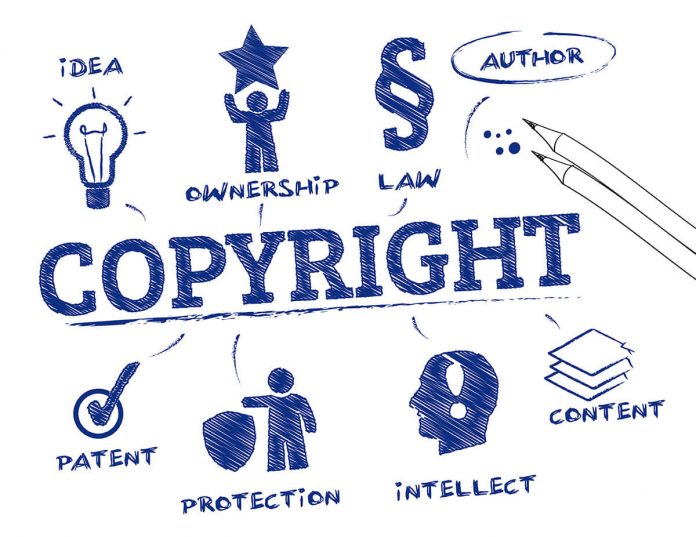This article is written by Harivignesh R.
Table of Contents
Introduction
The development of Intellectual Property Rights has a history over a century. During the initial times, in the United Kingdom the rights over all the works vested with the Crown. So a kind of monopoly prevailed over, since others could not have access to a particular work. But the advent of the printing press seemed to give hope, but that too did not overcome this monopoly. But if we see, the idea of copyright is in existence but in a non-explicit way. Only after a series of legislations and Judicial Pronouncements, the rights of an individual (creator) is recognised and the use of the work is also made available. But in the United States, the recognition came directly from the legislators and was not from the practices, existing before. But the United States does not always co-exist with the other nations of the world.
In lieu with the development there are several aspects which have been brought into light and been recognised as a proper area for protection. As like is the introduction of Trade secrets which have been differentiated from the Patent rights, where the former has a much known usage over the globe.
[1] On that note it is an accepted fact that the Copyright protection is the one introduced much earlier in comparison with the others. When a person creates a work that is copyrightable, what happens when someone else uses it? It may very well be possible where the license to use is granted by the creator/author. But the right of the licensee as compared to the licensor is in question. But with the advent of technology and the change in attitude of the people in relation towards interest towards a particular work. This led to the usage of the work in different forms, which gave rise to designs. Due to the expansion of scope of the existing rights and the origin of separate recognition for different intellectual property and their legal protection, the problem arises. That is when several rights exist together, there exists an interconnection and an overlap between them. This results in the overlap of copyright and design, copyright and trademark, trademark and patents, design and patents. This overlap could be a hazard in the coming times, having economic implications.
[2] Moreover it is a known fact that different countries have different sorts of practises, and with IP rights being territorial in nature, the rights granted in each country differs. On that note, when there are several steps taken for the international recognition of rights, this overlap tends to increase day by day and not reduce.
[3] Out of this, the overlap between the design and a copyright is much debatable since existence of one, denies the other. There are design copyright in few countries and design patents in few countries. The major question is where does this differentiation arise, does the design identification criteria merge with both Copyright and Patent? But due to time constraint this issue is not dealt in depth in the article. In addition, this article would also discuss the nature of the Design to be a Derivative work; the importance of the term Commercialisation; and granting of separate rights for the design holder than from the copyright. For analysing the same and the interrelation it is necessary to get into the rationale of the different regimes.
Design and prevailing confusions
Designs are meant to protect the non-functional but original expression in the form of patterns, shapes and ornamentation which are applied over the products industrially produced. [4] Due to the advent of more technology, the need for the designs have been made necessary. The separate law was necessary because what needed to be protected and what not has to be categorised clearly. To analyse the object behind the classification between design patent and design copyright, it is necessary to understand what it is constituted of. It is a fact that for more than 100 years, there is a link between the design and the copyright which have been tried to demarcate. [5]
In India, initially the designs Act, 1911 was there which was then replaced by the Designs Act, 2000. In India the protection of design copyright is provided. [6] The object of the 2000 Act is to provide protection to the intellectual labour in formation of a design which is new and original. It lays down three conditions i.e., the design has to be New, Original and should not be published in prior and not to be disclosed to the public, and such design should be able to be distinguishable from the other designs [7]. On the other hand, the United States grants Design patents, which protects the appearance. The design has to be new, novel and it has to be an ornamental design. [8] This also mandates a registration. [9] If we look at the structure of both Patent Copyright, the patent’s structure is
more organised and fixed which even helps in easy resolving of disputes. [10] So that could be one reason as to the US offering design patents. But US Design patents are similar to other countries’ design protection. [11]
Moreover in India, though the designs are given a copyright protection, the process involved in obtaining the registration resembles the structure of patent. In the overlap between the patent and the Designs, they both try to protect the different aspects of the same property. So there is an involvement of two different elements, novelty and originality. The novelty is for the patents and the originality is for the designs. [12] But in case of copyright and design, both try to protect the same aspect in a property. It is just that in case of design the protection is claimed for the applied works and in case of copyright, the protection is claimed for the work per se.
The conflict arises here, since both copyright and designs depend on the same criteria of originality. [13] But still, the objective behind such splits of design patent and design copyright is not clear, but may be attributed to the practices of that particular nation. However the grant of copyright does not confer a monopoly right to the author and it does not prohibit others from creating the work without copying. But the patent grants a monopoly right and thus prohibits others. [14] The nature of the US is that it seeks to enjoy monopoly, which is also evident from the creation of many laws that were in support of them, especially the TRIPS.
Design under derivative works
On analysing the issue of design and derivative works under copyright, it is necessary to understand the derivative works. In the United States, derivative work means the work that is created with its base on an already existing work. [15] It is also stated that there has to be substantial copying from an already existing work, i.e., the expression of the work. The newly created work has to be a Re-cast or transformation or adaptation of an original work. But it is to be noted that since the derivative works are based on an already existing work, the protection would be granted only for what is in the derivative work. Here the protection granted for the original work would be intact. [16] In Indian Law, the term derivative work is not per se used. But, if we look into the rights of the author, he may translate his already existing work or adapt his already existing work or reproduce. He may also assign such rights to any other person. But for considering whether design falls under this, we need to look into the term adaptation.
On analysing the term as defined under S.2, it can be found that the possible way of using artistic works are only in a way of dramatic works. But looking on the savings clause of the provision, which states that any work which is a rearrangement or alteration of the already existing work. [17] This still doesn’t clarify the position. But when a newly created work affects the already existing work, then the new work cannot be considered as valid. From the prevailing position, it can be said that copyright still vest in the originally created work. But in case of designs, such vesting is not possible. [18]
Overlap of copyright and designs
In spite of the several judicial pronouncements with reference to the overlap of copyright and designs, the position is not settled. It is much essential to look into the provision of the copyright Act which talks on resultant of the overlap between both. It says that when a particular matter is registered under designs then it will lose its protection under the copyright regime. [19] In addition to it, when a particular matter is eligible for protection under design [20], will lose the copyright protection if the item is produced for more than 50 times in an industry. This applies though the item is not registered under designs. [21] With this it can be derived that though a work is created by a person, he cannot have a copyright protection over it if such work has been applied in a product for such numbers.
If we could look at the objective behind such provision, it would be a much needed provision to prevent a particular author from claiming rights over the same product under different regimes of intellectual property. Because, if a creator claims the right of copyright and also uses the creation in a product to economically benefit from both the regimes, the law prohibits it. For instance, if a particular work is applied in a product and produced for more than 50 times, then there won’t be a copyright protection and moreover since it is not registered under the design, the creator loses the right under the designs regime also. The best suiting example would be of the game “Scrabble”, a board game.
The owner of the game claimed protection for the game under the category of artistic works. He also seek infringement by an online game maker. But unfortunately the court held that since there is no registration under designs and moreover since it is produced more than 50 times, he gets no protection under both the regimes. [22] In the “Microfibres case”, [23] there is an infringement claim made by the US Company against an Indian businessman for infringement of copyright. He claimed that he own a copyright over the patterns in the fabric, which he claims to be copied without his consent. The court looked into the issue of the overlap of copyright and designs and have held that the patterns fall under the design regime and since the claimed owner hasn’t registered the same, he doesn’t have ownership over the same and hence no infringement. Even in “Samsonite case” [24], the court refused the claim of the claimed owner over the design of the suitcase since it was not registered and also since more than 50 times the suitcase is produced, the copyright ceased to exist. Hence no infringement.
Though this wing of law seems to deprive a person from claiming both the rights under different regimes. If we consider it properly, the design rights are considered in the first instance when a case is to be decided, though a copyright aspect is there. At this juncture a question arises as to the very rationale of the existence of the design rights. Because when an artistic work can very well be protected under the copyright regime, why should a question of design come into play? Further in case of designs the registration is made as a mandate to claim the right, which is not the case in copyright. In addition to the question on the existence of designs Act, is there not a possibility for amending the copyright Act stating that if any artistic work is applied and it is industrially produced more than 50 times the protection shall be only for 15 years and in the case of rest usual protection of Life + 60 years.
Further if we look into the definition on what all includes a design, as defined under the designs Act: it is only for a visual appeal and not for the method of production, and it excludes TM and also the artistic work as defined under S.2(c) of the Copyright Act. [25] Most importantly after considering this definition, S.15 (2) has not much effect because there cannot be an overlap between the two regimes. It is because there won’t be any artistic work that can be protected under design. Hence this created a grey area of law until a judicial pronouncement clearly demarcated it. In “Microfibres Case”, the element of intention has been brought in. That is if while creation of the work it is intended to obtain a copyright protection, only then it would be considered as an artistic work. But if the work is created with the intention of application to any product and industrially reproduces it then the work created will not be qualified to be an artistic work; hence no design protection.
To make it clear, if an author creates a painting it would be artistic work if he has no intention of applying it industrially. But if an author creates a painting to apply it industrially it won’t be an artistic work. [26] Here the categorisation is created on the basis of the nature of the work (that is the created work to be used per se, or involving another mechanism to put it to use in some other way), when there is a change in the nature of the work created, then nature of the rights and protection guaranteed also changes. But the problem is identifying the intention or the object of the creator, since all the works created have a market. [27] But there is an exception to the production of 2 and 3 dimensional products and such will be considered as an artistic work. [28]
But when the same case moved to the division bench of the high court, the court reversed the intention requirement. It states that when a design is registered under the designs Act, its copyright protection ceases to exist, but right over the original work i.e., painting won’t be affected. (Hence it affects the derivative rights). And on the other hand the design capable of registering but not registered will have Copyright in that work till it is produced industrially for more than 50 times. [29] But in case of a 3 dimensional work, the basic drawing (2d) which is an original work would be protected under the copyright regime, and the mould could be protected under the design. In case of copying of this 3d work, indirect infringement of the copyright can also be claimed. [30]
But on the other hand, the S.11 of the Designs Act, gives a Copyright protection over the design for 10 years from the date of registration. Based on the present legislative scheme, in certain aspects the creator gets both the copyright and design protection. Hence it can be said that a creator can get rights under both regimes. But also taking into note the above mentioned discussion, in most of the cases, the creator would either get a copyright or the design right over the same work. And moreover, the differentiation between both these is the nature of the work. They both try to protect the same aspect in a property. It is just that in case of design the protection is claimed for the applied works and in case of copyright, the protection is claimed for the work per se. The conflict arises here, since both copyright and designs depend on the same criteria of originality. Under both regimes the economic exploitation is possible and permissible, hence the difference doesn’t arise between them on this aspect. Hence the term Commercialisation does not play a major role in differentiating them.
Conclusion
The design rights are granted exclusively to appreciate the intellectual labour. But however the design is considered the same, the difference between design patent and design copyright depends on the nation and its perspective of intellectual labour. However the former grants a monopoly right and the latter does not grant a monopoly right. But the nature of the design rights remain the same. Further the design rights are not to be considered as a derivative work, since the nature of protection granted to the original work is being affected by design. But also taking into note the above mentioned discussion, in most of the cases, the creator would either get a copyright or the design right over the same work. Hence the rights granted under the designs Act is not in addition to the right under the copyright Act, but in exclusion to it. Finally, since under both regimes, there is economic exploitation, the term commercialisation does not bring in a difference between the protections granted.
References
1 See Kurt M. Saunders, The law and ethics of trade secrets: a case study’, 42 California Western LawReview 210 (2006).
2 Neil Wilkof & Shamnad Basheer, Overlapping Intellectual Property Rights, Oxford University Press, 2013.
3 Id.
4 See WIPO, ’Industrial Designs’ (Aug. 14 2020 5.00 PM) http://www.wipo.int/designs/en/.
5 Lionel Bently & Brad Sherman, Intellectual Property Law (Ed. 4), Oxford Publication.
6 Designs Act, 2000, Act No.16, § 11.
7 Id. At § 4.
8 See 35 U.S.C. §§ 101, 102, 171.
9 35 U.S.C. § 102 (b).
10 Sebastian M. Torres Rodríguez, The Convergence of Design Patent Law, Trademark Law, and Copyright Law for Better Protection of Intellectual Property for Commercial Designs, 5 U.P.R. Business Law Journal, 122-152, 2013.
11 McAndrews Held & Malloy, Protecting and enforcing design rights, United States, World Trade Mark Review (Nov. 2016).
12 Basheer Supra note 2.
13 Basheer Supra note 2.
14 A. D. Russell-Clarke, Design Plagiarism And Copyright Reform, 116 Journal Of The Royal Society Of Arts, 737-749 (August 1968).
15 Melville B Nimmer & David Nimmer, Nimmer on Copyright, Vol. 1, Lexis Nexis (2010).
16 Id.
17 The Copyright Act, 1957, Act No. 14, § 2(a)(v).
18 Infra, Overlap of Copyright and Designs.
19 See The Copyright Act, 1957, §15(1).
20 Designs Act, 2000, Act No.16, § 2(d).
21 Id. At §15(2).
22 Mattel Inc. v. Jayant Agarwalla, IA No.2352/2008 in CS(O.S) 344/2008 (Delhi HC).
23 Microfibres Inc. v. Girishar and Co.,2006(32) PTC 157 (Del).
24 Samsonite Corporation v. Vijay Sales and Anr, FSR (2000) 463.
25 Designs Act, 2000, Act No.16, § 2(d).
26 Microfibres Inc. v. Giridhar and Co.,2006(32) PTC 157 (Del).
27 Jane C. Ginsburg , The Concept of Authorship in Comparative Copyright Law’, 52 DePaul Law Review 1087 (2002–2003).
28 See The Copyright Act, 1957, § S.52(1)(w).
29 Microfibres Inc. v. Giridhar and Co.,2009 (40) PTC 519 (Del).
30 See. Dart Industries Inc. And Anr. v Techno Plast and Ors. 2007 (35) PTC 285 Del.
Students of Lawsikho courses regularly produce writing assignments and work on practical exercises as a part of their coursework and develop themselves in real-life practical skill.
LawSikho has created a telegram group for exchanging legal knowledge, referrals and various opportunities. You can click on this link and join:
 Serato DJ Crack 2025Serato DJ PRO Crack
Serato DJ Crack 2025Serato DJ PRO Crack











 Allow notifications
Allow notifications



